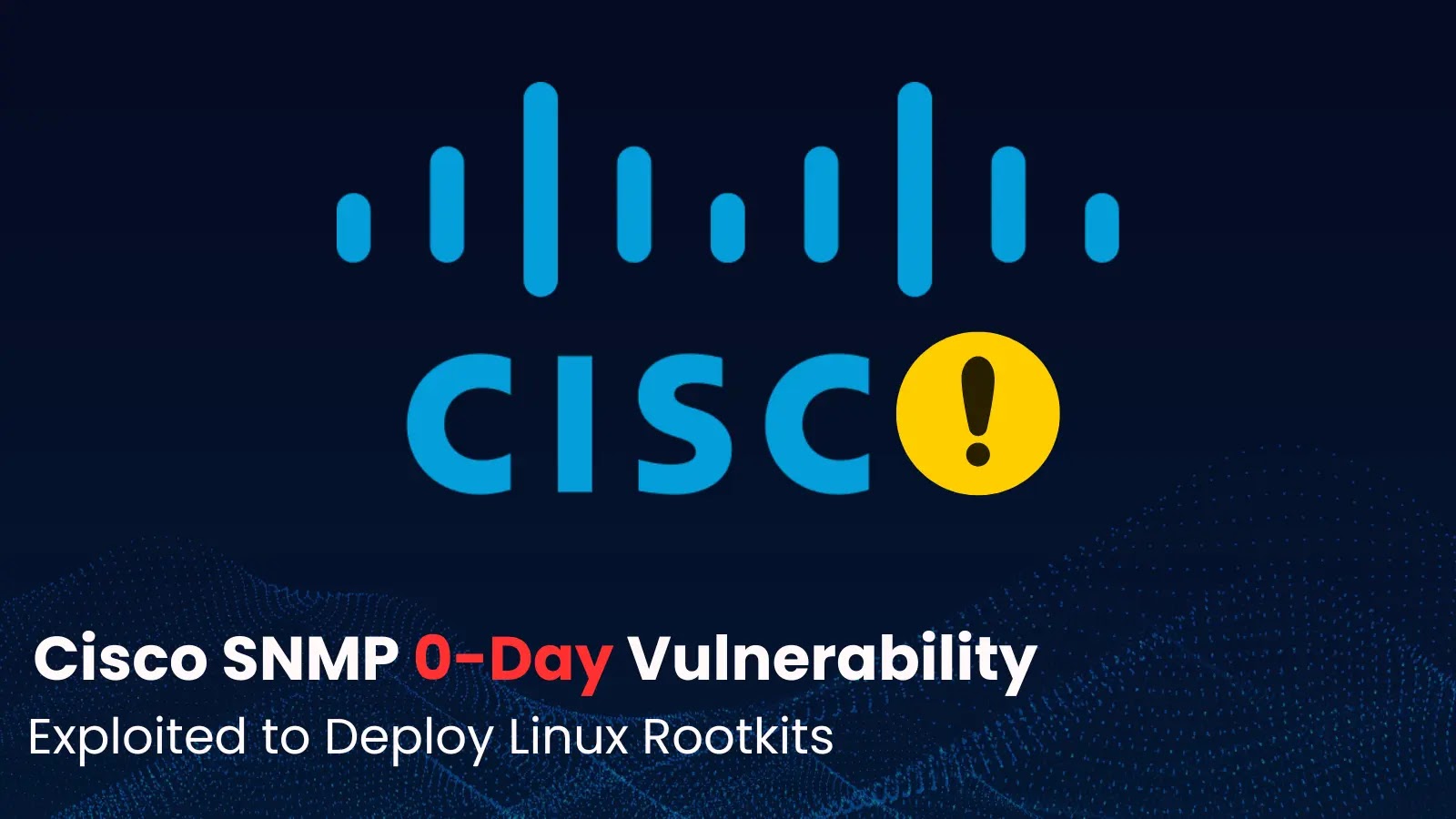
Cisco SNMP 0-Day Vulnerability Actively Exploited To Deploy Linux Rootkits
Cisco SNMP 0-Day: Operation Zero Disco Exploits Critical Vulnerability for Linux Rootkits
The cybersecurity landscape has been rocked by the disclosure of “Operation Zero Disco,” a sophisticated attack campaign actively leveraging a previously unknown (0-day) vulnerability in Cisco’s Simple Network Management Protocol (SNMP) implementations. This critical flaw allows attackers to achieve Remote Code Execution (RCE) and install persistent Linux rootkits on compromised network devices, posing a significant threat to organizational infrastructure.
Trend Micro researchers observed this operation targeting vulnerable network devices, primarily older Cisco switches, highlighting the ongoing risk associated with unpatched or end-of-life hardware. The vulnerability, identified as CVE-2025-20352, underscores the severe implications of unaddressed network security weaknesses.
Understanding the Cisco SNMP 0-Day Vulnerability: CVE-2025-20352
The core of Operation Zero Disco relies on the exploitation of CVE-2025-20352, a critical RCE vulnerability affecting Cisco devices utilizing SNMP. SNMP, a widely used protocol for managing and monitoring network devices, when improperly secured, can become a significant attack vector. This 0-day allows unauthorized actors to execute arbitrary code on affected devices, bypassing existing security controls.
Attackers are leveraging this RCE to deploy malicious Linux rootkits. Rootkits are stealthy software packages designed to hide their presence and activities on an infected system, granting attackers persistent, unauthorized access. In the context of network devices, a rootkit can enable long-term surveillance, data exfiltration, or even serve as a launchpad for further attacks within a compromised network.
Operation Zero Disco: Modus Operandi and Impact
Operation Zero Disco distinguishes itself through its sophistication and focus on critical network infrastructure. Threat actors behind this campaign are not merely looking for transient access; their objective is to establish a covert, persistent presence.
- Targeted Devices: Primarily older Cisco switches, which may lack the latest security features or are more likely to be overlooked in patching cycles.
- Exploitation Method: Remote Code Execution (RCE) via the SNMP 0-day (CVE-2025-20352).
- Payload: Linux rootkits. These rootkits ensure persistence and evasion, making detection and removal challenging for network administrators.
- Consequences: Successful exploitation leads to complete compromise of the network device, potential data interception, network manipulation, and a foothold for lateral movement within the network.
The deployment of Linux rootkits on network devices is particularly concerning. These rootkits can manipulate device configurations, reroute traffic, or establish covert communication channels, effectively turning a critical network component into an adversary-controlled asset.
Remediation Actions and Mitigation Strategies
Given the active exploitation of CVE-2025-20352, immediate action is imperative for organizations utilizing Cisco SNMP-enabled devices. While an official patch from Cisco is pending for this 0-day, several proactive measures can significantly reduce exposure and mitigate risk:
- Disable Unnecessary SNMP: If SNMP is not essential for device management, disable it immediately. Limit SNMP access to trusted IP addresses only.
- Implement Access Control Lists (ACLs): Configure ACLs on network devices to restrict SNMP traffic to only authorized management stations. This significantly reduces the attack surface.
- Upgrade/Replace Older Devices: Prioritize upgrading or replacing older Cisco switches and other network devices, especially those nearing end-of-life (EOL) or end-of-support (EOS). These devices often lack essential security updates and advanced protective features.
- Segment Networks: Implement network segmentation to isolate critical devices and reduce the potential for lateral movement in case of a compromise.
- Regular Security Audits: Conduct frequent network security audits and vulnerability assessments to identify and address misconfigurations or potential weaknesses.
- Monitor Network Traffic: Implement robust network intrusion detection/prevention systems (NIDS/NIPS) to monitor for anomalous SNMP traffic patterns or unusual device behavior that could indicate compromise.
- Patch Management: As soon as Cisco releases a patch for CVE-2025-20352, prioritize its immediate deployment across all affected devices.
- Strong Authentication: Ensure strong, non-default SNMP community strings are used if SNMP cannot be disabled. Consider implementing SNMPv3 with its authentication and encryption capabilities.
Detection and Mitigation Tools
Leveraging appropriate tools is crucial for identifying vulnerable devices and detecting potential exploitation attempts. Here are some relevant tools:
| Tool Name | Purpose | Link |
|---|---|---|
| Nmap | Network discovery and port scanning, including SNMP port detection (UDP 161). | https://nmap.org/ |
| SNMPwalk | Command-line tool for fetching SNMP data from network devices, useful for enumeration. | Included in Net-SNMP (Linux/Unix). |
| Wireshark | Network protocol analyzer for deep inspection of SNMP traffic for anomalies. | https://www.wireshark.org/ |
| Zeek (Bro) | Network security monitor for robust traffic analysis and anomaly detection. | https://zeek.org/ |
| Vulnerability Scanners (e.g., Nessus, OpenVAS) | Automated scanning for known vulnerabilities and misconfigurations in network devices. | Tenable Nessus / OpenVAS |
Conclusion
Operation Zero Disco serves as a stark reminder of the persistent and evolving threats targeting critical network infrastructure. The active exploitation of a Cisco SNMP 0-day, CVE-2025-20352, to deploy Linux rootkits demands immediate attention from IT and security professionals. Proactive measures, including disabling unnecessary services, implementing stringent access controls, and diligent monitoring, are essential to defend against such sophisticated attacks. Staying informed and agile in applying security best practices is paramount to protecting an organization’s digital assets.





